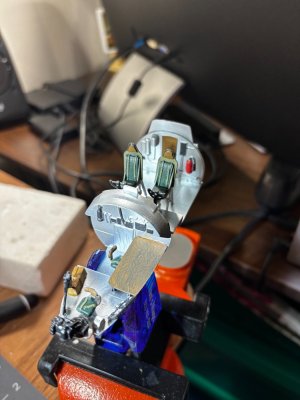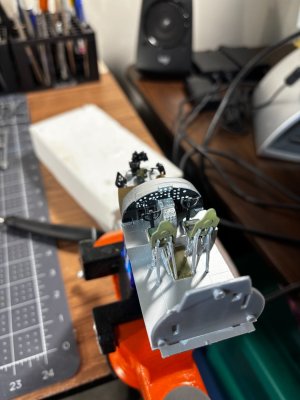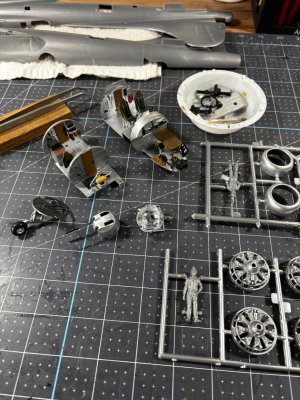- Joined
- Mar 22, 2024
- Messages
- 396
- Points
- 168

I have had that problem. My solution is to use actual wood- 0.5mm veneers.Hello Rob, at this time I just don't have the ability to paint realistic looking wood
 |
As a way to introduce our brass coins to the community, we will raffle off a free coin during the month of August. Follow link ABOVE for instructions for entering. |
 |

I have had that problem. My solution is to use actual wood- 0.5mm veneers.Hello Rob, at this time I just don't have the ability to paint realistic looking wood
Yes, that is a viable solution which briefly crossed my mind. I decided not to pursue it though.I have had that problem. My solution is to use actual wood- 0.5mm veneers.
Not to get too off course, painting wood is not that hard to do. You can look it up on you tube. I have done it a few times using artists oils mostly black and burnt umber. It usually comes out very realistic. Some use acrylics. Here is a good site.Yes, that is a viable solution which briefly crossed my mind. I decided not to pursue it though.

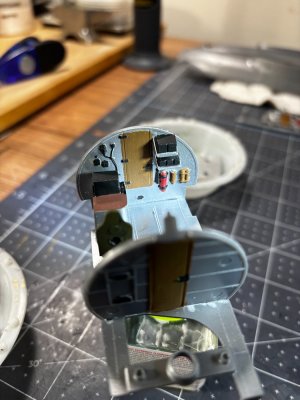
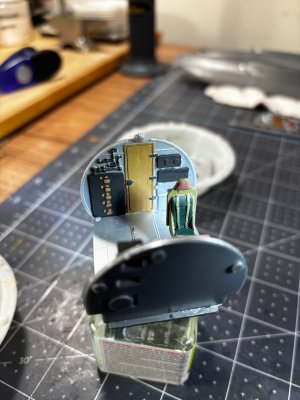
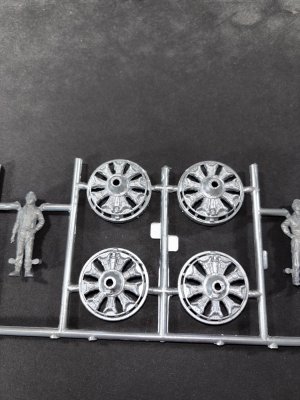
Thats what I was thinking, just wondering what ratio of water to paint.If using acrylics just add water to a bit of paint and voila.
I would start with a 10:1 ratio and test and adjust from there, you want a thin coat, and if needed instead of making darker wash, let dry and add second coat. If you seal with matt spray in between coats, it seals first layer and you can then wash off second coat if it gets to dark looking.Thats what I was thinking, just wondering what ratio of water to paint.
Thanks Kurt, so the grungy look would be more realistic. I was thinking somewhere just after a pressure wash and before the next flight.Engines were dirty, oily and greasy, so a good coat of grime is needed.
I can say from hands on experience they leak oil all the time in use, and often operating time is limited by oil tank capacity versus fuel tank limits.
Thanks Kurt, thats what I was looking for,great advise. So black paint watered down.I would start with a 10:1 ratio and test and adjust from there,
Yup, that thought is now constantly in front of what I'm doing.Keep in mind when gluing that edges in contact need to be free of paint or glue wont stick them together.
Fine sandpaper of scrape with knife blade to remove paint before adding glue.
Another great suggestion, thanks.Now if you really want to make those pop, a VERY light (application, not tone) dry-brushing with silver or oily steel paint might be called for.
I doubt they pressure washed the engineThanks Kurt, so the grungy look would be more realistic. I was thinking somewhere just after a pressure wash and before the next flight.

plus soapHi Daniel. You can purchase a wash from the usual paint suppliers (Vallejo for example) - but you can also make your own. If using acrylics just add water to a bit of paint and voila.
Great tips Rob, thank you.I doubt they pressure washed the engineThey had enough to do just to repair and keep the plane in shape to fly. Just for a future idea. I usually use black or brown oil paints diluted with turpenoid or turpentine. It will not loosen the acrylic or enamel underneath. I usually rub most of it off afterwards just leaving a trace. It also makes weathering the exterior (oil leakes flowing down the wings, exhaust etc.) The amount of weathering is up to you of course.
Another thing I like to use is powered pastel chalks (just scrape it off a pastel chalk stick) apply them with a brush and then brush them in the direction of the airflow, you can do it multiple time to build up the effect you want. If you think it's too much you can brush some off. I seal the pastels with a matt clear after.
Rob
